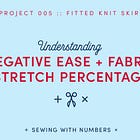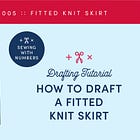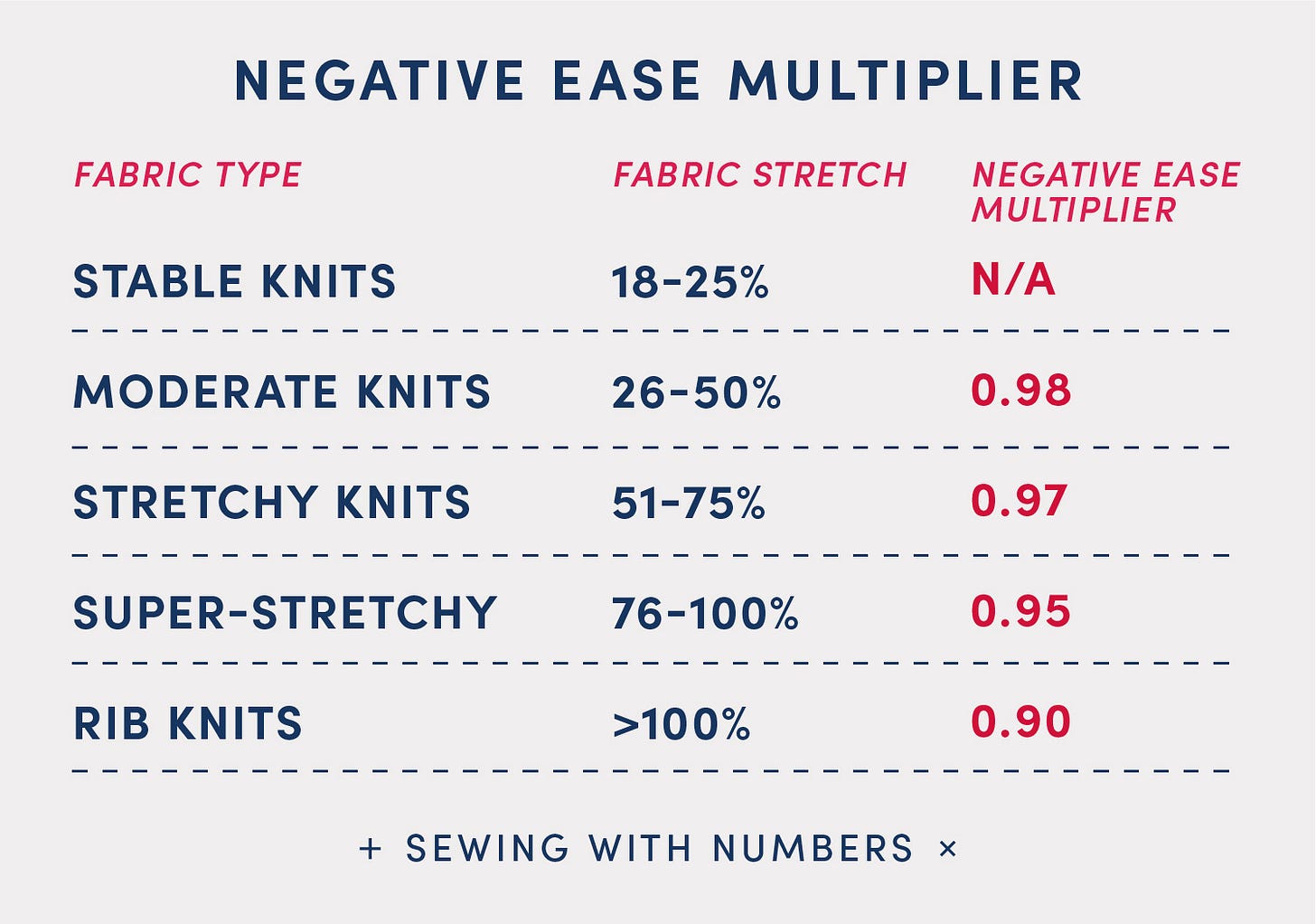How to Draft Bikini Briefs
In this tutorial, I'll show you how to draft a pair of undies fitted to the hip to any size you want. Downloadable pdf worksheet included!
Welcome to Sewing With Numbers, a newsletter about sewing, math, design and how to draft your own sewing patterns. Through simple pattern drafting exercises, I'll show you how fun, useful and empowering math can be. ✂️ Posts older than 3 months are archived for paid subscribers. But if subscriptions aren’t your thing, I also have PDF Booklets for older projects in my shop.
Hello my mathy friends! I hope that you are doing well. Today, I’m sharing the first tutorial in our Undies Series (aka Project 008). This tutorial is for a basic bikini brief. This style sits on the hips with a short-ish side seam. This pattern is designed to be sewn with stretch fabric and have the edges finished with elastic. Let’s get started!
References
For this tutorial, I referenced the Hip Brief Block in Pattern Cutting for Lingerie, Beachwear and Leisurewear by Ann Haggar (on Bookshop). I have simplified the draft and broken it down into a step-by-step process. As always, the numbers and measurements you use are your choice. But I will also include the “standard” or recommended measurement from the text, in case it’s helpful. Btw, there are links to panty sewing tutorials in the intro post below.
For this pattern, I will be using stretch fabric and negative ease. I wrote about these concepts in detail in Project 005, the Fitted Knit Skirt (see links below). (Just a note, these posts are now behind the pay wall. I am working on making a pdf manual for Project 5 and hope to have it in the shop next week.)
To draft this pattern, we’ll be using a “Negative Ease Multiplier” which decreases the pattern by a percentage to correspond with how much stretch the fabric has. For reference, the chart is reposted below.
In this tutorial, I will also reference “Trueing” corners which I discussed in Project 002 Sunhats. In short, you need to "square off" the corners anywhere that two seams join, and the corner needs to be at a 90 degree angle.
How to Draft the Bikini Brief Pattern
Part 1: Collect Information
I’ve assigned a representative letter to each number we’ll need. I’ll use these letters to write the drafting formulas. When drafting your undies, you’ll replace the letters with your own numbers.
A Hip Circumference This is the measurement of the body circumference at the widest part of the hips (assuming that the main part of the undies is sitting at this point). See graphic below.
B Negative Ease Multiplier Designer’s choice. See reference graphic and links above. This makes the pattern/fabric SMALLER than the body measurement and is intended for stretch fabric. (If you are not using stretch fabric, you can ADD ease to the pattern and fit the undies with elastic. This will give a baggier appearance to the undies.)
C Front Crotch This is the curved measurement of the center front. Start measuring at the top of the front of the undies and end in the center of the crotch. See graphic below.
D Back Crotch This is the curved measurement of the center back. Start measuring at the top of the back of the undies and end in the center of the crotch. See graphic below.
Depending on your shape, C and D will likely be different. Our reference text makes the Back Crotch 2cm longer than the Front Crotch.
The gusset is the section of fabric that goes between the legs and connects the front and back.
E Gusset Width Designer’s choice. This is the side to side measurement of the gusset. You can measure a pair of undies that you like. Or pick a new one to try. The reference text recommends 7 cm total.
F Gusset Length Designer’s choice This is the total length of the gusset. You can measure a pair of undies that you like. Or, measure your body and estimate a different length. The reference text uses a total of 15cm Gusset Length with 6cm in the front and 9cm in the back.
G Side Seam Length Designer’s choice. The reference text uses 9cm.
H Seam allowance Designer’s choice.
Part 2: Draft the Pattern
We’re going to draft this pattern as one piece and then divide it for the Front, Back and Gusset. We’ll start with a rectangle and then draw in the lines and curves to make the pattern. Note, this rectangle is HALF of the pattern, with the back on the left and front on the right. The side seam is in the middle and the two sides are the Center Back and Center Front. The sides will become fold lines for the pattern.
STEP 1: Draw a rectangle that is half of A Hip Circumference times B Negative Ease Multiplier and D Back Crotch long. In short, the rectangle is (A/2)×B wide and D long. Note, if C Front Crotch is longer than D Back Crotch, use C as the rectangle length.
Draw a line down the center width of the rectangle for the Side Seam. Starting on the bottom right corner of the rectangle, mark the length C Front Crotch along the right (center front) side.
STEP 2: Draw a line connecting the top left corner (center back D) to the marking for C at the center front. Shown with a red line and dots. This is the top edge of the briefs.
Starting where this line meets the side seam, mark G Side Seam Length down from this line. Shown with a blue line and dots. This is the side seam.
STEP 3: Starting at each bottom corner, mark the length of half E Gusset Width on the bottom of the rectangle. Draw lines connecting the gusset to the bottom of the side seam. (Shown in red in the graphic above.)
STEP 4: Draw in curves for the leg openings. If desired, add a little curve to the waistline as well. Next, we need to true the corners at the upper center front and center back, at the side seam and the gusset. (Note in the graphic above, the lines from Step 3 are shown in pink as a reference. The new curved and trued pattern line is shown in red.)
The reference text advises first drawing in the gusset and then curving the lines for the leg openings as follows. As with a lot of pattern drafting, these curves are a suggestion. You’ll need to experiment to find the curve that you like best.
STEP 5: Starting at the bottom corners, mark half the Gusset Length F, aka F/2, up along the center front and center back. Draw a line across pattern and add a curve if desired. This line is shown in red above.
Note: The reference text uses a total of 15cm Gusset Length and divides it over the front and back with 6cm in the front and 9cm in the back. You may want to divide the gusset the same way. (I don’t have strong personal feelings on gusset placement. The only scenario in which I think it would be crucial is when making period panties. Or, if you’re making a swim bottom, you might want to place the gusset seam so it’s not visible in the front)
STEP 6: Cut the pattern along the lines for the gusset and along the side seam.
STEP 7: Now let’s combine the front and back gusset pieces to make one pattern piece. In the graphic above, the Front Gusset has been rotated 180 degrees so that what was the bottom is now facing the bottom of the Back Gusset. (The bottom lines are shown in red.) Tape the gusset pieces together at the bottom to make one piece.
You can cut the gusset pattern piece on the fold (the straight line on the left). Or, reflect the gusset across the left side/center to make one pattern piece that can be cut flat.
STEP 8: Add seam allowance to the side seams and gusset seams (where the gusset is sewn to the front and back). Add grain lines. If desired, you can also reflect the Front and Back pattern pieces so that they can be cut flat, instead of on the fold.
Part 3: Download the worksheet
I always like having a place to write down my measurements. So, I made a two page recap of the instructions with just the notes and condensed diagrams. I hope you find it helpful!
I hope that you enjoyed this tutorial. Please let me know in the comments if you have any questions. Next week, I’ll show how to draft a high cut pair of undies that is shaped towards the waist.
There are lots of ways to support this free content. You can tap the "heart" at the top or bottom, share or “restack” the post to help other people find it. Become a paid subscriber or, visit one of the links below.
Sewing With Numbers Drafting Manuals are now available for purchase.
Pattern Shop | Improv Quilting E-Course | Donate at Ko-Fi | YouTube
Happy mathing!
Beth


















Wonderful, Beth. Thank you.